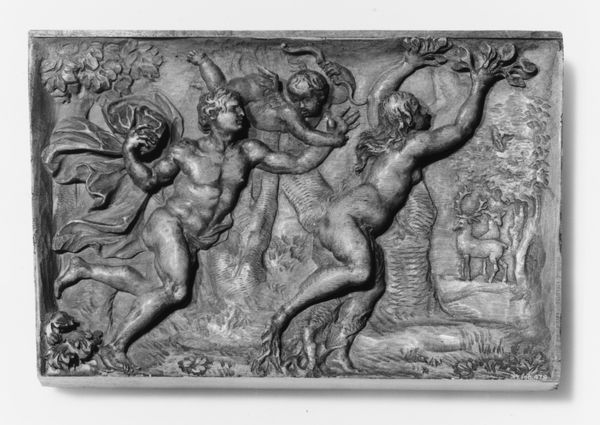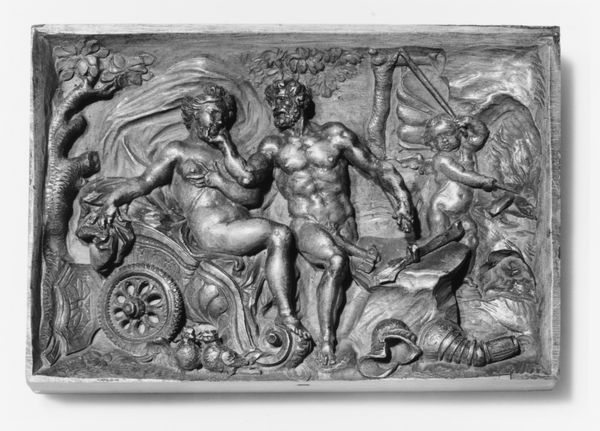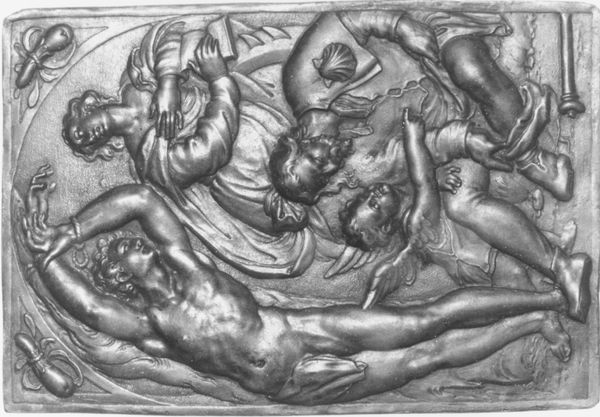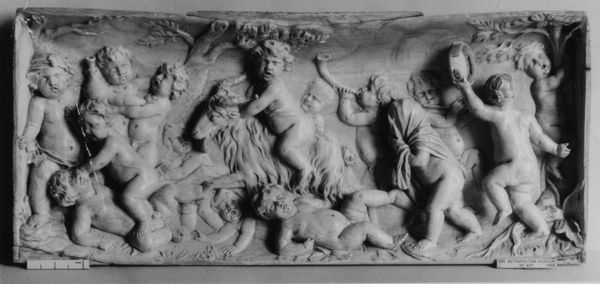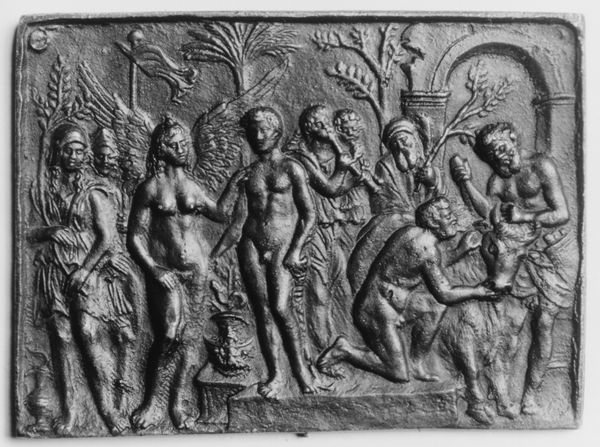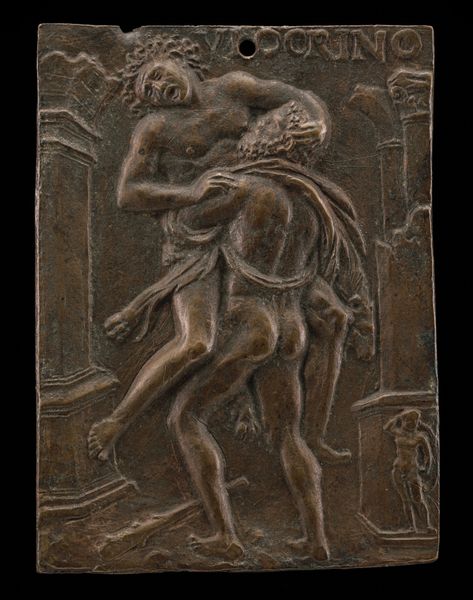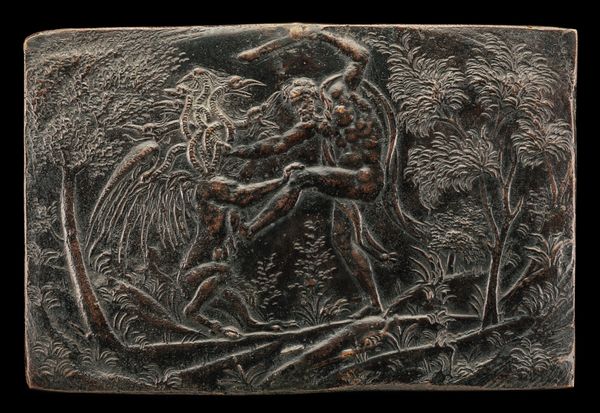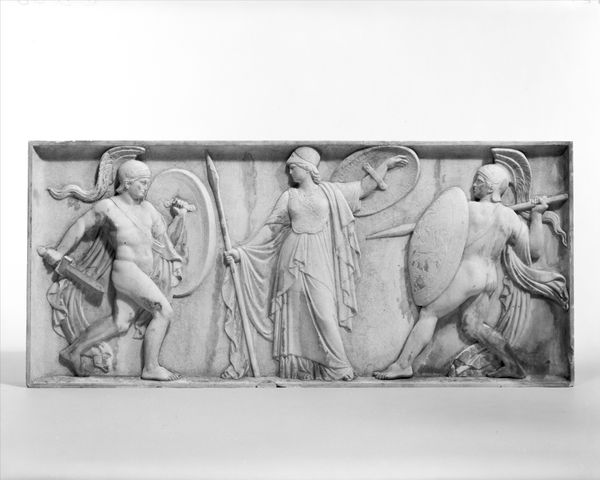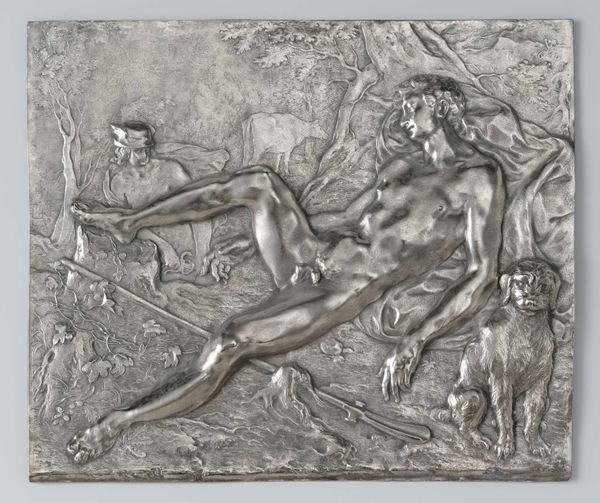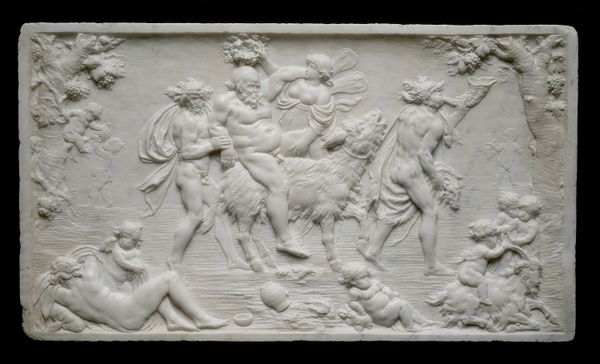
carving, relief, sculpture
#
carving
#
sculpture
#
relief
#
sculptural image
#
figuration
#
11_renaissance
#
geometric
#
sculpture
#
carved
#
history-painting
#
decorative-art
#
italian-renaissance
#
nude
Dimensions: Overall (confirmed): 85 × 128 mm
Copyright: Public Domain
Curator: The tension in this carving is palpable. Annibale Fontana’s “The Abduction of Dejanira,” made sometime in the 16th century, depicts a violent moment frozen in relief. Editor: It certainly captures a dramatic instant. There's something frantic about it. Look at Dejanira’s cloak billowing wildly, and the centaur seems caught mid-gallop. It conveys raw energy. Curator: Absolutely. Fontana was working in a cultural moment obsessed with classical narratives and mythological dramas. This relief, like many others from the Italian Renaissance, served a didactic purpose, reminding viewers of moral lessons through visual storytelling. Editor: Abduction, of course, is a potent symbol in art. The act speaks of power, dominance, and disrupted social order. This scene from the Hercules myth—with the centaur Nessus attempting to carry off Dejanira, only to be shot by Hercules—highlights a battle between civility and barbarism, doesn't it? Curator: Precisely. Renaissance audiences would have instantly recognized this scene. It underscores the era’s fascination with bringing classical mythology into the present, as the tales resonated with contemporary social and political concerns about justice and the established order. Editor: You can feel the psychological undercurrent, too. Dejanira's posture expresses her fear as much as the centaur projects a terrifying strength. And what about the arrow aimed to change her trajectory? I notice there is something unsettling about the very solidness of that object defying gravity. Curator: Interesting observation, that Renaissance art used mythology to speak to present concerns like marital honor, concepts of heroism, and social disruptions of family lines. The carving acts almost as a propaganda piece. Editor: So true, it's a great illustration of how images become cultural touchstones, continuously reworked to hold fresh meaning. These historical accounts have lasting potency. Curator: Exploring these narratives across media really shows how power structures use these iconic scenarios for their legitimization and, perhaps also, reinvention. Thanks for the conversation, very enlightening. Editor: It's fascinating to realize that even what we consider ‘high art’ still reflects elemental truths about ourselves and our place within power structures. Thanks to you, too.
Comments
No comments
Be the first to comment and join the conversation on the ultimate creative platform.
